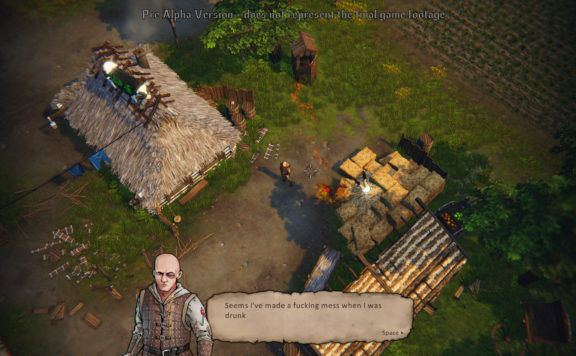I cannot state enough how much I love a good Metroidvania-style game. Both Super Metroid and Castlevania: Symphony of the Night are among my all-time favorite side-scrolling classics. With that in mind, it is no small wonder that I gravitate toward new titles that have been inspired by these classics and take the genre into new places – such as Axiom Verge and Iconoclasts. Because of how beloved these titles are, it takes a special kind of developer to be blatantly irreverent in presenting a game that, in many aspects, IS its predecessor with a fresh pair of pants and a new coat of paint. This is our review for A Robot Named Fight for the Nintendo Switch.
From the very beginning, I knew that I was in for something special with A Robot Named Fight. It makes no excuses for what it is: it is Super Metroid for a more adult audience. A Robot Named Fight’s narrated introduction has the same cadence and digitized voice style as the opening of Super Metroid. Fight’s animations and character model are strikingly similar to Samus Aran and the control layout is pitch perfect.

In A Robot Named Fight, you play as one of countless bots with the insurmountable task of ridding the world of the Megabeast – a fleshy sack of meat with countless tendrils and spawn that plagues the robots’ homeworld. Abandoned by their machine gods, you take on the mantle of your predecessors, bringing Fight to the Megabeast over and over again. But here is the catch: you will die… many, many times.
Aside from being birthed into the Metroidvania family, A Robot Named Fight is also a rogue-like game. When you die, that’s it – you lose! No save states, no redoes. It’s game over, man. The slight exception to this is that you may find one or more save points which offer you one extra chance, but once it’s spent, it’s spent.
Death does have an advantage though: during your run, it is possible to unlock a number of potential gear upgrades that you will be able to find on your next run. Each run feels like there is a greater accessibility to better items from the start. I guess death does have some benefit!
Another aspect that sets A Robot Named Fight apart from the pack is that no two runs are the same. That’s right: every run is procedurally generated, pulling from a random pool of bosses, equipment, locations, upgrades, allied venders, and shrines. While this would seem arduous in the world of Super Metroid, where items are hidden in the walls, A Robot Named Fight still has hidden items, but the map marks which rooms have them. Not only that, you are highly likely to find their hiding place once you have busted open that wall a time or twelve. It is more of a quality of life feature than hand-holding.

Throughout each run, you will build up your arsenal and attributes by finding items. Some items will increase your health or energy pools – energy is used to power auxiliary weapons such as the Scatter Shot or to fire energy weapons. Other items increase your rate of fire, your speed, or your energy recharge rate.
As stated before, these items in each run are randomized based on the run itself. Every run will have within it the equipment you need to reach the Megabeast – assuming you survive that long. For example, if a run requires the ability to shoot switches through walls, your run may have a penetrating shoot upgrade or you might find an energy weapon, like a rail gun. Either one works to help you progress.

Upgrades are not the only item that you will collect. There are also scraps and archaic artifacts to find. These are used at shrines and vendors to either purchase upgrade and weapons or to make an offering to the machine gods. A word of warning: each of the machine gods has a sacred number. Donate the wrong number of scrap and they will smite you!
One of the biggest questions that I had to ask myself while playing A Robot Named Fight was this: am I enjoying the game because it reminds me of Super Metroid – a gaming that I have played countless times -or do it stand on its own bipedal, mechanical feet?
The fair answer is yes.
A Robot Named Fight banks heavily on the nostalgia of the player. After all, its predecessor gave birth to a genre named after itself. It is no small task of any game to extract itself from that shadow. However, instead of fighting against it, A Robot Named Fight leans into the legacy by embracing the traits handed down by mommy-dearest while exploring its own identity.
Note: Our copy was reviewed on Nintendo Switch with a code provided by PR.
COMPARE TO: Super Metroid, Axiom Verge, Dead Cell






